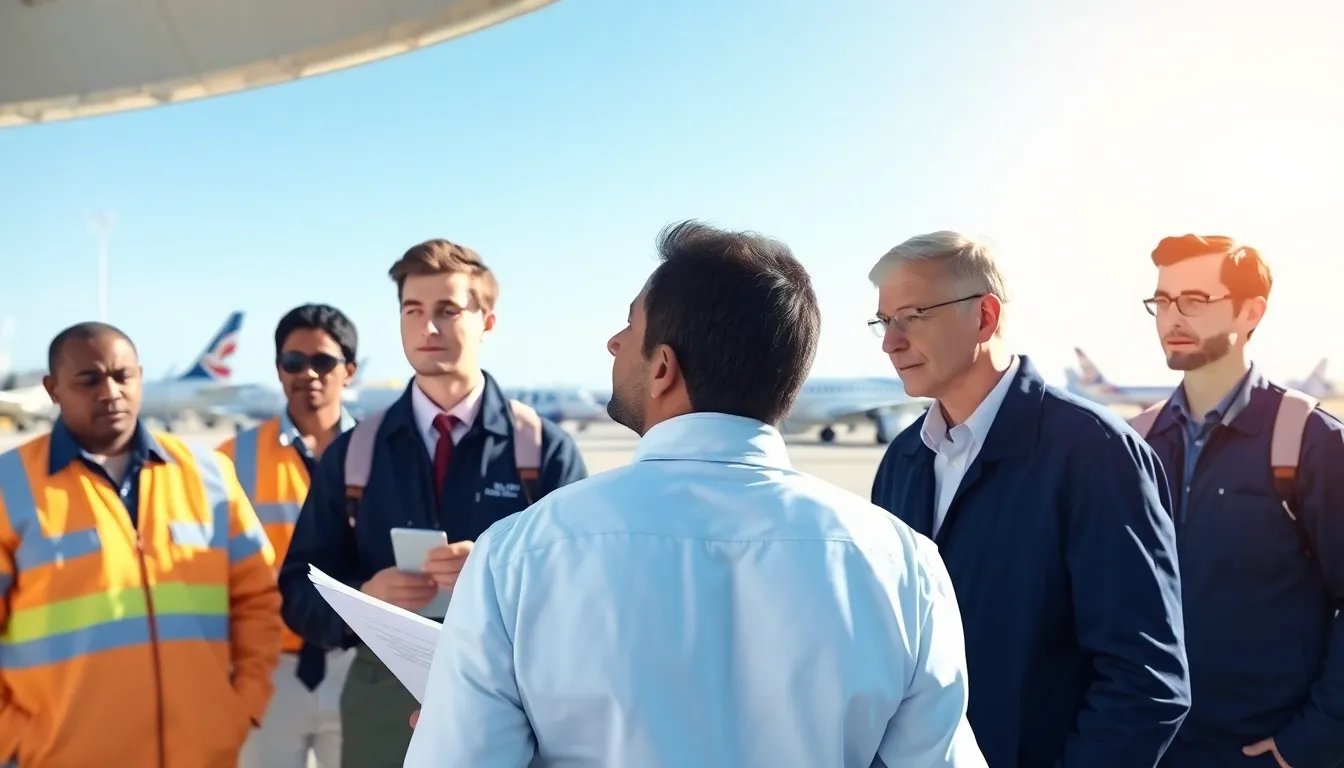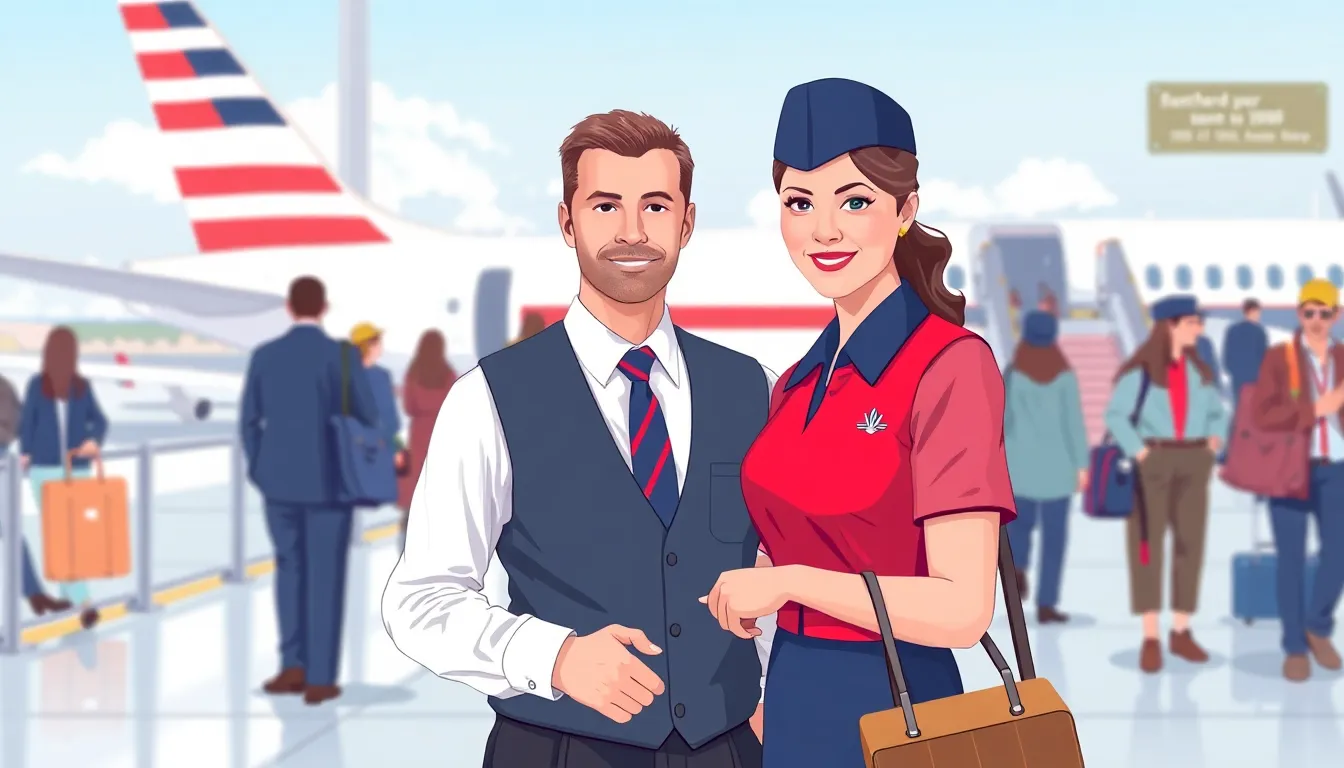Air travel safety might not sound as thrilling as a high-speed chase in an action movie, but it’s just as crucial. With millions of passengers zipping through the skies every day, understanding the ins and outs of flying safely can turn even the most nervous flyer into a seasoned jet-setter. After all, who wouldn’t want to glide through the clouds with confidence?
From turbulence that feels like a rollercoaster ride to the mysteries of airport security, air travel can be a wild adventure. But fear not! With a few tips and a sprinkle of humor, navigating the skies can be a breeze. Buckle up as we explore the essential elements of air travel safety—because nothing says “I love flying” like knowing you’re in good hands while soaring at 30,000 feet.
Table of Contents
ToggleUnderstanding Air Travel Safety
Air travel safety encompasses numerous practices and protocols that ensure passenger security during flights. An awareness of these measures promotes confidence among travelers.
Importance of Air Travel Safety
Air travel safety plays a crucial role in maintaining public trust. According to the International Air Transport Association, commercial flights record a remarkable safety rate, with one accident per 2.52 million flights in 2020. Regular safety audits and rigorous training for pilots and crew members reinforce the commitment to passenger well-being. Moreover, ongoing advancements in technology, such as improved navigation systems, contribute to reduced risks. Understanding these elements helps travelers appreciate the dedication to their safety.
Common Safety Concerns
Turbulence often raises concerns for many flyers. While unexpected, most turbulence is manageable and poses minimal danger. Additionally, airport security procedures can create anxiety. These measures aim to protect everyone on board by preventing dangerous items from entering the cabin. Health-related issues also arise, particularly during pandemics, leading to enhanced sanitation protocols on flights. Understanding these common concerns helps passengers feel more prepared. Awareness reduces anxiety and allows individuals to focus on enjoying their journey.
Regulations and Guidelines

Understanding regulations and guidelines is crucial for ensuring air travel safety. These protocols establish a framework for secure flying experiences.
International Standards
International aviation safety relies on standards set by the International Civil Aviation Organization (ICAO). ICAO mandates that member countries implement safety management systems and conduct regular audits. These standards cover airworthiness, crew training, and emergency preparedness. Compliance with regulations, such as the Convention on International Civil Aviation, enhances global safety. Additionally, international security measures help protect passengers from potential threats.
National Regulations
Each country enforces its own regulations to bolster air travel safety. In the United States, the Federal Aviation Administration (FAA) oversees safety protocols for airlines and airports. The FAA establishes guidelines for everything from pilot certifications to aircraft maintenance. Strict adherence to these regulations ensures a uniform safety culture across the aviation industry. Furthermore, Transportation Security Administration (TSA) policies dictate airport security procedures, facilitating the prevention of dangerous items onboard.
Safety Measures in Air Travel
Safety measures in air travel encompass protocols that ensure passenger security from the moment of booking until arrival at the destination. Understanding these measures significantly boosts travelers’ confidence.
Pre-Flight Safety Protocols
Pre-flight protocols include comprehensive procedures that airlines and airports enforce. Every passenger must undergo security screening before entering the boarding area, particularly to check for dangerous items. Luggage searches and metal detector scans help prevent threats. Airlines also conduct pre-flight checks, ensuring that aircraft systems function properly. Documentation review ensures every passenger possesses valid identification and boarding passes. Additionally, health declarations may occur during pandemics, confirming passengers adhere to safety regulations.
In-Flight Safety Procedures
In-flight procedures are vital for maintaining safety during the flight. Crew members conduct safety demonstrations prior to takeoff, detailing the use of seatbelts, oxygen masks, and emergency exits. Passengers must pay close attention to these instructions, as they prepare for any unexpected situations. Cabin crew remains available to assist with any queries regarding safety equipment. Should turbulence occur, staying seated with seatbelts fastened minimizes risk. Communication systems aboard allow crew to relay vital information to passengers, ensuring everyone is informed of the flight’s status. Regular drills keep crew prepared for emergencies, ensuring a rapid response should the need arise.
Technological Advances in Air Safety
Numerous advancements in technology significantly enhance air travel safety. Innovations in aircraft design and systems often prioritize passenger security and comfort.
Modern Aircraft Features
Enhanced materials and engineering methods contribute to modern aircraft’s robust construction. Composite materials reduce weight while increasing strength, resulting in better fuel efficiency. Advanced navigation systems, such as GPS and radar, provide precise route tracking, minimizing risks during flight. Safety features like fly-by-wire controls offer improved handling, enabling more effective responses to emergencies. Regular software updates include the latest safety protocols, ensuring systems remain up-to-date. Furthermore, cabin pressure control systems maintain a comfortable environment, reducing health risks for passengers.
Role of Air Traffic Control
Air traffic control plays a crucial role in maintaining safety in busy airspaces. Controllers manage flight paths and coordinate takeoffs and landings, ensuring safe distances between aircraft. Continuous communication between pilots and air traffic controllers mitigates misunderstandings and prevents conflicts. Radar systems allow for real-time monitoring of aircraft movement, enabling quick responses to potential hazards. Advanced automated systems assist controllers by providing alerts on traffic conditions and weather, enhancing decision-making. Regular simulation training for air traffic controllers prepares them for unexpected situations, reinforcing overall safety in the sky.
Passenger Responsibility
Passengers play a vital role in maintaining air travel safety. Awareness of surroundings and adherence to safety protocols greatly contribute to a secure flying experience.
Awareness and Compliance
Being attentive during the flight ensures passenger safety. Each traveler should listen to crew instructions carefully, as they provide essential information for emergencies. Familiarity with safety cards positioned in seat pockets helps everyone understand evacuation routes. Keeping seat belts fastened when seated also minimizes the risk of injury, especially during turbulence. Following cabin regulations, such as restrictions on electronic devices, supports a distraction-free environment. Passengers who remain alert and cooperate with crew members create a safer atmosphere for all.
Reporting Safety Issues
Reporting safety concerns prompts immediate action. If a passenger notices suspicious behavior or an unattended bag, alerting crew members becomes essential. Quick communication channels allow crew members to address potential issues promptly, maintaining overall safety. Passengers who witness irregularities, such as equipment malfunctions, should notify staff immediately. Encouraging a culture of open communication promotes shared responsibility for safety. Each individual’s vigilance and proactive approach strengthen the safety framework that protects everyone on board.
Air travel safety is a collective effort that involves airlines passengers and regulatory bodies. By understanding safety measures and protocols travelers can significantly enhance their flying experience. It’s essential to remember that millions fly safely every day thanks to rigorous training and advanced technology.
Passengers play a crucial role in maintaining this safety culture by staying informed and adhering to guidelines. With a commitment to safety from all parties involved air travel remains one of the safest modes of transportation. Embracing this knowledge can transform anxiety into confidence allowing everyone to enjoy their journeys with peace of mind.



